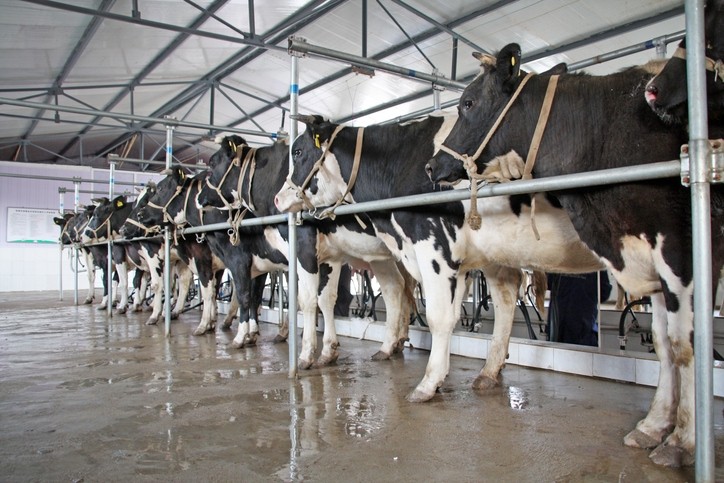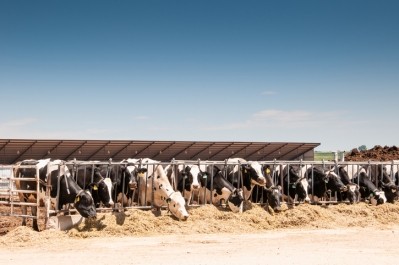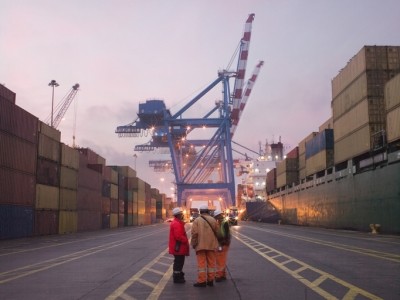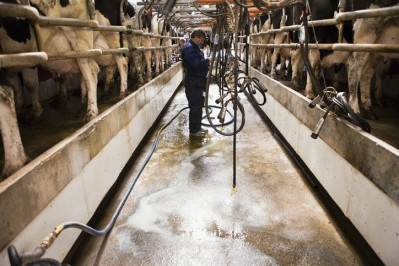Hike in concentrated feed use in increasingly consolidated Chinese dairy sector

“Such large-scale farms are using more sophisticated feed management techniques to control milk production, reducing the surplus created during the winter and increasing output during the summer.”
In 2019, China's fluid milk production will increase 2.3% due to higher profits earned by the dairy farmers, given the increased profitability of these large-scale, modern farms, wrote the authors.
“With higher milk prices, farmers can afford to increase use of concentrated feed to realize efficiency gains. Overall, milk quality has improved, commanding higher prices from the processors.”
Small dairy farms continue to close, relocate, or consolidate operations due to stricter environmental protection regulations, according to the report.
This year alone has seen dairy farms near Beijing, Tianjin and Shanghai reduced by 50%, 46%, and 51% respectively this year.
“Overall, China is following the international trend of consolidation, resulting in increased farm scale and per cattle milk yields.”
Such developments, noted the USDA review, have contributed to a higher domestic fluid milk price, returning the per-animal profit margin to a more sustainable level of 3,000 RMB/head (US$426.2/head). “This stronger milk price has also led to slight increases in the overall dairy herd to 6.25 million head, representing a 0.8% annual increase.”
The USDA forecasts that the milk price in China in 2019 will continue increasing but at a moderate rate.
“Despite higher costs for dairy cattle breeding and increased feed costs, due to tariffs on US soybeans and alfalfa, the increased milk price and the dairy cattle milk yield will more than offset changes to these input costs.”
China’s milk production is mainly concentrated in the north and includes four major milk production areas. Among them, Inner Mongolia is the largest milk production area in China, with an inventory of about 2.35 million head and annual milk production of about 6.93 million tons. The dairy cattle inventory in southern China makes up around 12% of China’s total dairy cattle inventory, accounting for 10 to 15% of milk production.
Cattle imports for breeding
Dairy cattle imports will increase in 2019, but at higher prices, forecast the US agency.
It said that China mainly imports cattle for genetic improvement, with Australia and New Zealand the two largest live animal exporters to that country.
The dairy cattle price in both those countries rose in 2019 because the Australian dairy cattle herd is affected by the 2018 drought and New Zealand’s supplies remained flat with increased demand from China driving prices by 20% this year.
Whole milk powder production
In China, converting domestically produced fluid milk to whole milk powder (WMP) is not profitable due to the availability of lower priced WMP from the international market.
Domestic production costs per ton for WMP are 10,000 RMB (US$1,500) higher than imported products, said the US report. However, due to differences between consumption and production seasons, farmers have no choice but to convert surplus milk into WMP, noted the authors.
They said Chinese farms have been trying to cope with this issue by adjusting feeding regimes to decrease milk production in the first half of the year and increase the production in the latter half of the year.
Chinese dairy consumption trends
The USDA report noted that consumption growth will continue to outstrip domestic dairy product supply in China, driving increased imports of fluid milk, WMP and skim milk powder (SMP).
Pasteurized milk and yogurt products are driving dairy consumption growth, reducing use of Ultra-High Temperature (UHT) milk, states the USDA’s report. To date, pasteurized milk consumption accounts for 14% market share in China, as compared to around 99% market share in developed countries like Canada, the US, and Japan, found the authors.
As their income rises, Chinese consumers are seeking out higher quality dairy products, noted the US agency. Citing industry data, the USDA forecasts that pasteurized milk and yogurt consumption will maintain double digit growth rates in China over the next three years.
High input and production costs limit domestic production of both cheese and butter. Chinese imports of cheese in 2020 are forecast to reach a record high 119,000 metric tons, continued the report. One industry expert forecast that, in 2019, sales of cheese in China were around $790m and would increase to $1.5bn within the next five years.
The USDA estimated that less than 30% of the population consume the recommended amount of dairy. It is not part of the traditional Chinese diet. In addition, the milk price is relatively high. However, it predicted that with urbanization, health initiatives and growing incomes, China’s per capita milk consumption will continue to rise, especially in the third and fourth tier cities.












